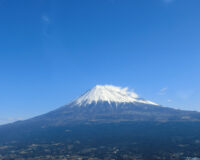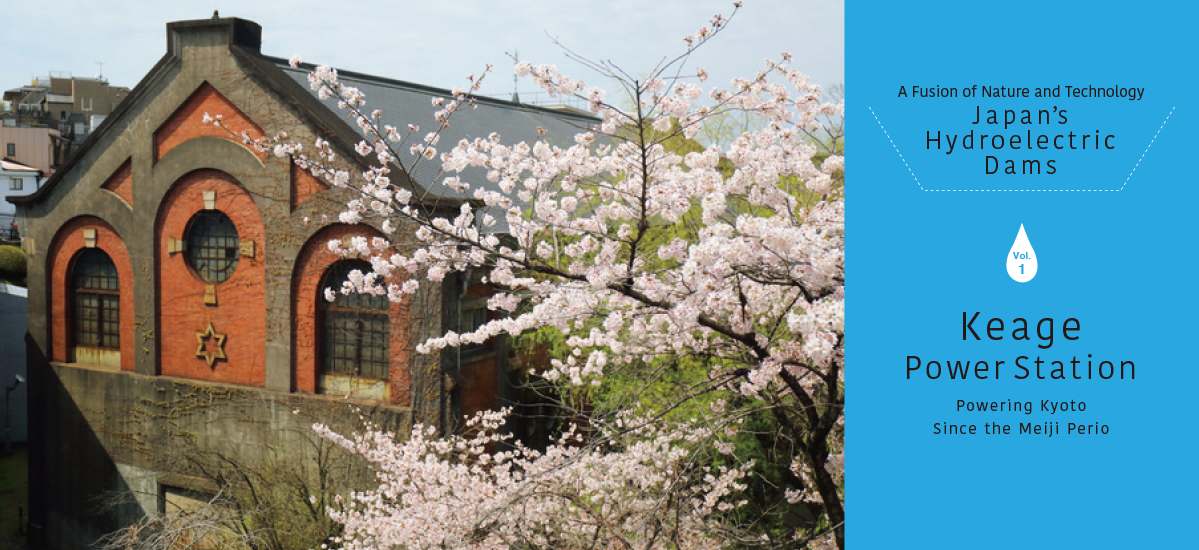
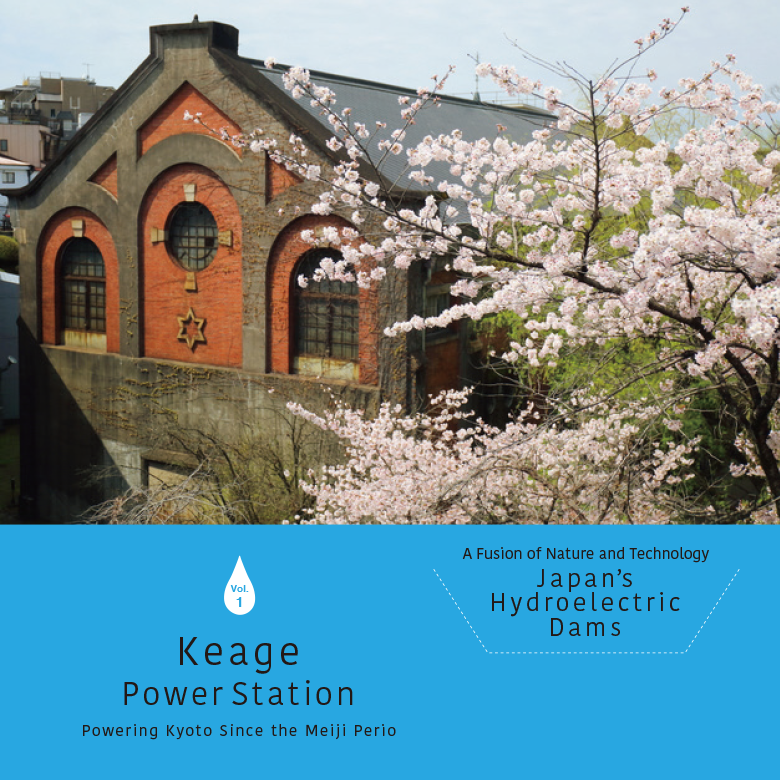
In a mountainous country such as Japan, high in precipitation and low in energy resources, hydroelectric power plants provide a valuable source of electricity. While colossal dam projects might belong to the previous, less environmentally-conscious century, nobody can deny the breath-taking grandeur of a soaring hydroelectric dam. Not all dams are constructed on a gargantuan scale though – Japan’s dams come in all shapes and sizes. In this series we explore the charms of Japan’s hydroelectric dams.
In Part 1 we head to Japan’s ancient capital, Kyōto, to visit Keage – Japan’s oldest canal-type hydroelectric power station.
Text : 藤森禮一郎 Reiichiro Fujimori / English Version : Judy Evans
Keyword : Japan Hydroelectric Dams / Keage Power Station / Japan Hydroelectric Power Stations / Lake Biwa Canal / Nanzenji Aqueduct
Dam Construction a Canal Project Afterthought
Near Nanzenji Temple, and just to the west of the Keage Incline Plane (an overland track system used for raising barges between different water levels), sits a dignified red brick building. This is the Phase II Keage Power Station, built in 1912. The Kansai Electric Power Company’s Keage Power Station is a canal-type hydroelectric power station utilizing water channelled from Lake Biwa along the Lake Biwa Canal, which opened in 1890. The site of the Phase I power station, which was built in 1891 and demolished when the Phase II station was completed, was later used to build the Phase III station, completed in 1936.

Although the Phase II power station is no longer in use, the Phase III station (4.5 megawatt capacity) is still in active service 130 years after the project was originally commissioned. In 1942, control was transferred from Kyōto City to the Kansai Electricity Distribution Company (Kansai Haiden), which was restructured as the Kansai Electric Power Company after the war and continues to operate the power station today.
The Lake Biwa Canal project was conceived as a way of raising morale and revitalising the city of Kyōto, whose population and fortunes had plummeted when the city lost its centuries-old status as the seat of the emperor in the wake of the relocation of the capital to Tōkyō. At first, the waterway was envisaged as a transportation and irrigation canal, but once construction had begun, the project was expanded to include electricity generation capacity in anticipation of the demand for electricity that had begun to sweep the world.
Fate of the Canal Entrusted to Two Men
Tanabe Sakurō, the visionary engineer overseeing the canal project, was sent, along with Assemblyman Takagi Bunpei, to America to investigate canal systems in the cities of Washington and Newark. While there, the opportunity arose to visit a hydroelectric plant that had just opened at a silver mine in Aspen, Colorado. Armed with new knowledge of hydroelectricity generation, the two returned to Japan and submitted a proposal to add the construction of a power station to the canal project. This proposal was approved and the two men were entrusted with completing the development.
Kyōto was the first of Japan’s cities to modernise and begin using electricity city-wide, and the Phase I Keage Power Station was Japan’s first commercial hydroelectric power plant. In June 1891, two Edison 80 kW DC-generators (that Tanabe and Takagi had ordered while in the United States) were commissioned and supplied power to the adjacent incline track connected to the canal. Over the following six years, different generators were added in quick succession, each requiring a separate power network. This resulted in a staggering array of power lines strung on the same poles, each fed by a different set of generators. The additional generators supplied power for lighting, then for Japan’s first tramline, the Kyōto Denki Tetsudō, which began operation in 1895. By 1897 the power station was supplying electricity for a number of industries, including the Nishijin textile mills.
Recognised for innovation and excellence
In 2016, Keage Power Station was acknowledged by the Institute of Electrical and Electronics Engineers (IEEE) Milestones programme, an international award honouring significant technical achievements that have benefited humanity. Technological achievements proposed for this award must be at least 25 years old, must have benefitted humanity, and must have had at least regional importance. Keage Power Station is the second Japanese power station to have been recognized since the establishment of the award in 1983, with Kansai Electric Power Company’s Kurobe River Number 4 Power Station having received the award in 2010.
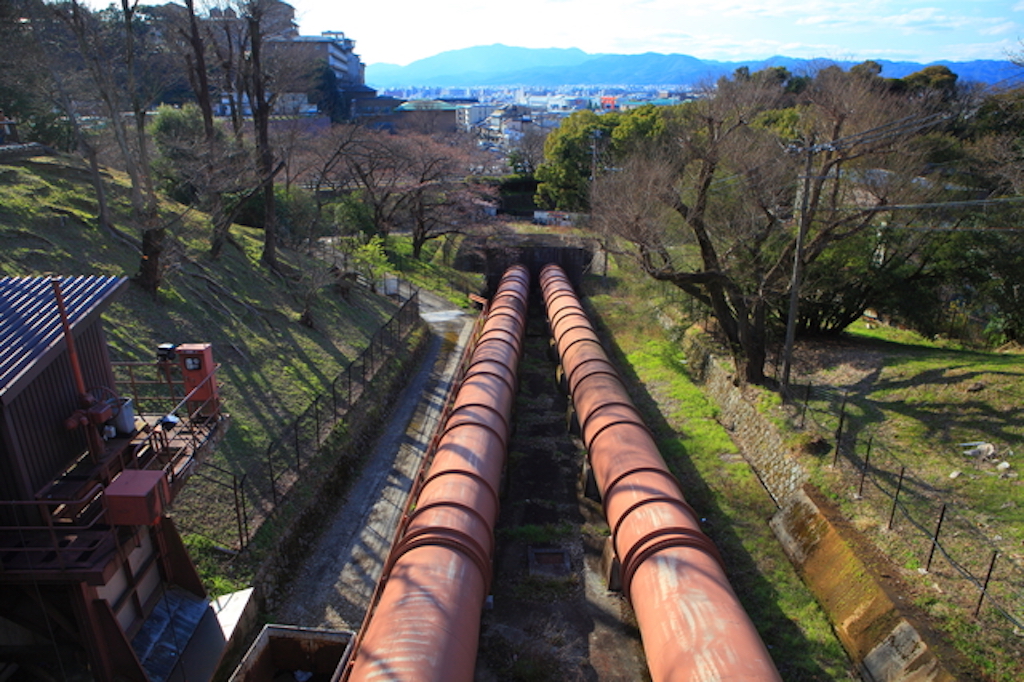
The IEEE Milestone award recognised Keage Power Station as being Japan’s first commercial power station, supplying electricity for street lights and Japan’s first commercial electric railway, as well as for industry in Kyoto, contributing to the modernization of Japanese industry. Keage Power Station is the first structure in Kyōto to have received the award.
Previously, Keage Power Station had received the Japan Society of Civil Engineers’ 2001 Civil Engineering Heritage Award as part of the “Power Stations of the Lake Biwa Canal” group, which includes Ebisugawa Power Station and Sumizome Power Station.
Recipient of Meiji 150th Anniversary Special Award
A handsome stone plaque above the entrance to the Phase II power house bears three carved characters, said to be the calligraphy of Prince Kuni Kunihiko (a great-grandfather of the current emperor). The plaque reads “Tenkō o Tasuku”, which has been interpreted to mean that using the gifts of nature to bring electricity to people’s lives fulfils the will of heaven. “Working God’s Will”, in other words. In 2018 the plaque was awarded the Meiji 150th Anniversary Special Prize in the Kyōto Scenic Award outdoor advertising category, which recognises outdoor signage in keeping with the cityscape, or historical signage characteristic of its period.
As well as being important heritage sites that convey a sense of 19th century Meiji Era Kyōto, Keage Power Station, the Lake Biwa Canal system, the Roman-style Nanzenji Temple aqueduct (Nanzenji Suirōkaku) and the incline plane are all renowned sightseeing spots.
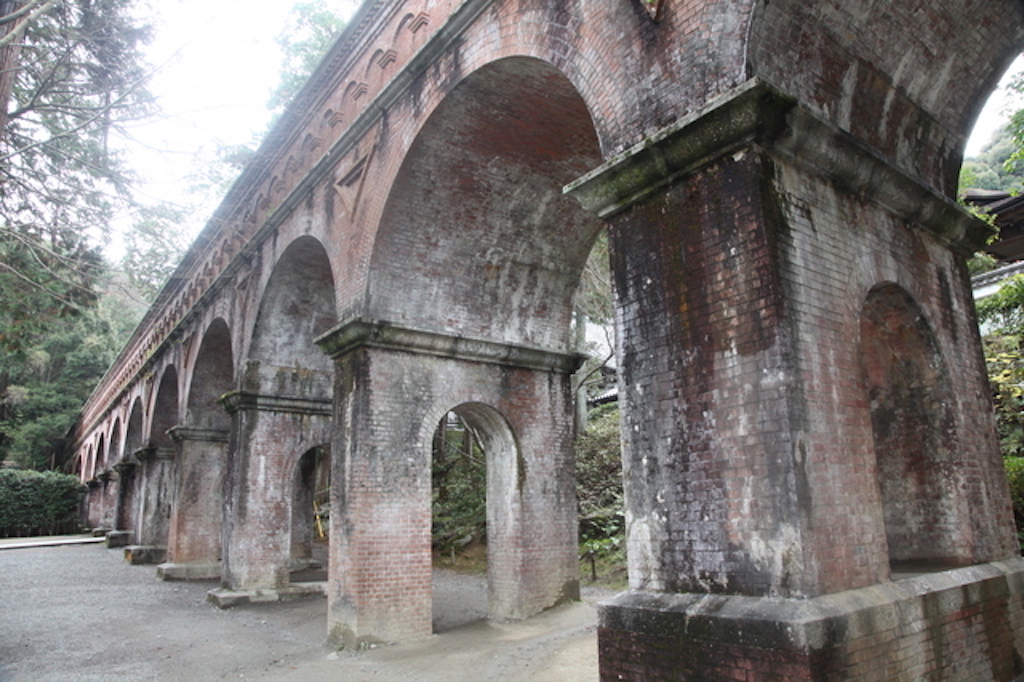
Sightseeing Around Keage
The Lake Biwa Canal system not only brings water to Keage Power Station, it also provides pleasant and relaxing waterways that beautify the surrounding neighbourhoods and provide pleasant areas to stroll and enjoy the old city.
Just upstream from Keage Power Station, on the northern side of Nanzenji Temple, is the Philosopher’s Path (Tetsugaku no Michi). This two kilometre-long stone path runs alongside a section of the canal between Ginkakuji and Nanzenji Temples. Lined on both sides with flowering cherry trees, this popular sightseeing spot is attractive all year round. In spring, when the flowering cherries form a frothy pink tunnel over the canal, the fallen petals floating gently along the canal evoke the elegance of the ancient capital.
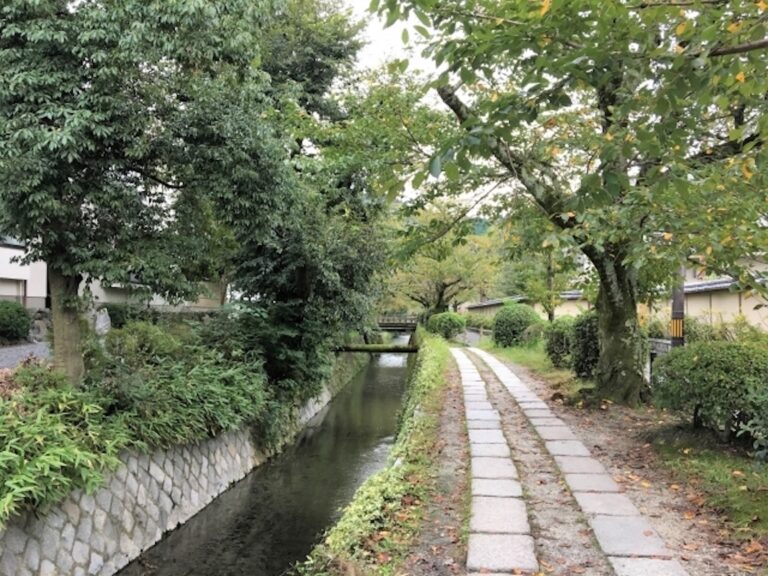
The Lake Biwa Canal Gardens are a collection of traditional gardens, many designed by renowned landscape gardener, Ogawa Jihei VII, fed by water from the canal. Unfortunately for garden lovers, most of these are on private property, with few open to the public. One that is open to the public though, is the beautiful Heian Shrine gardens, which form a horseshoe around the shrine compound. Comprising around three hectares and constructed by Ogawa Jihei over a twenty-year period, the gardens are divided into four sections, each drawing on borrowed scenery from the forest-clad Higashiyama hills. With weeping cherries in spring, bush clover in autumn and walking paths around the canal-fed ponds, these traditional Japanese stroll gardens have something to offer all year round.
Three other gardens, also designed by Ogawa Jihei VII and well worth a visit, are Murin-an garden; the Shirakawa-in Ryokan garden, and the gardens of the Namikawa Cloisonné Museum.
Murin-an Garden was designed for the former villa of 19th century statesman Aritomo Yamagata. Offering uninterrupted views towards the Higashiyama hills, Murin-an garden seems like an extension of the natural environment. The shallow rocky stream flowing through the spacious garden creates a rustic, natural impression. Shirakawa-in Ryokan, a traditional inn near Heian Shrine, has a small traditional garden that members of the public may view. The gardens of the Namikawa Cloisonné Museum are another Kyōto gem (as is the museum itself) located a short walk from Higashiyama Station on the Tōzai subway line.
Kansai Electric Power Company Keage Power Station
Awadaguchi Toriichō, Sakyō Ku, Kyōto City Tours of Keage Power Station are conducted every Friday, with a tour the morning and one in the afternoon. The tour skirts around the outside of the red brick Phase II power station before proceeding to the still-operational Phase III power station. Enquiries should be made in Japanese to Kansai Electric Power Company (075-205-5352). There is an application form in Japanese that must be submitted in advance of the tour. Anybody not fluent in the Japanese language is advised to have a Japanese speaker assist with the application process and accompany them on the tour.



